Lei Dong
Data driven discovery of human mobility models
Jan 10, 2025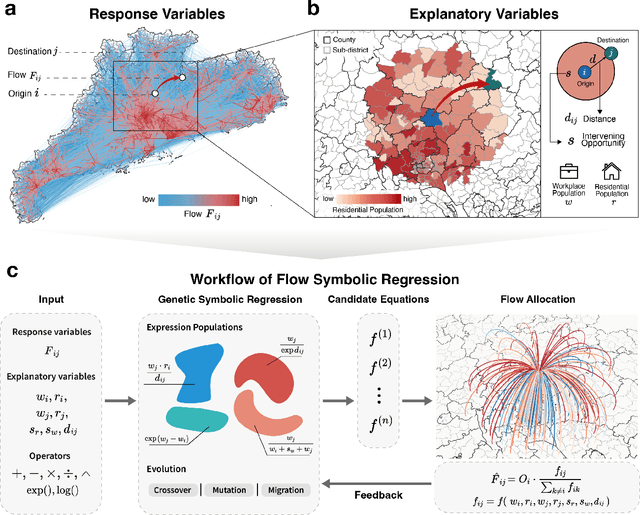
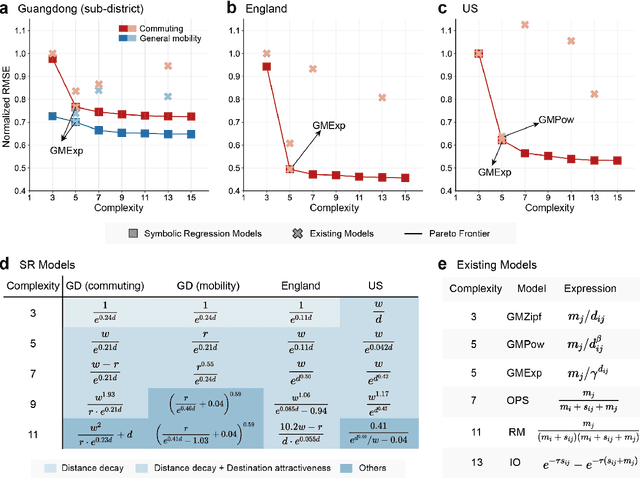
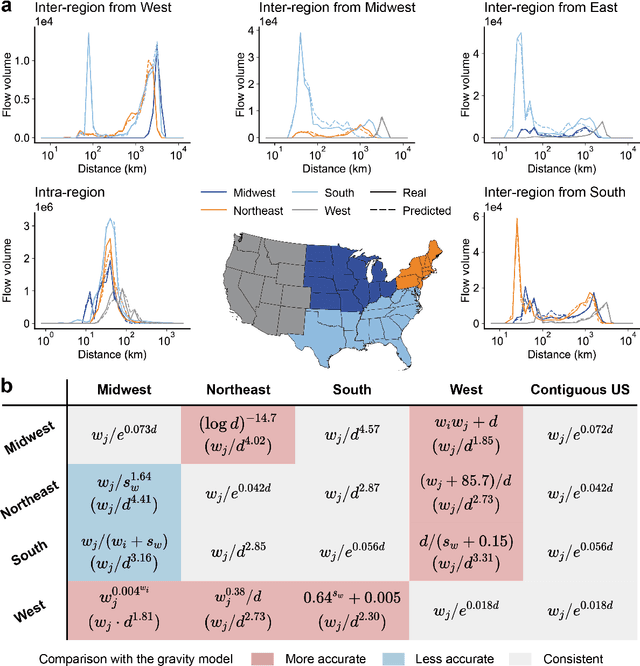
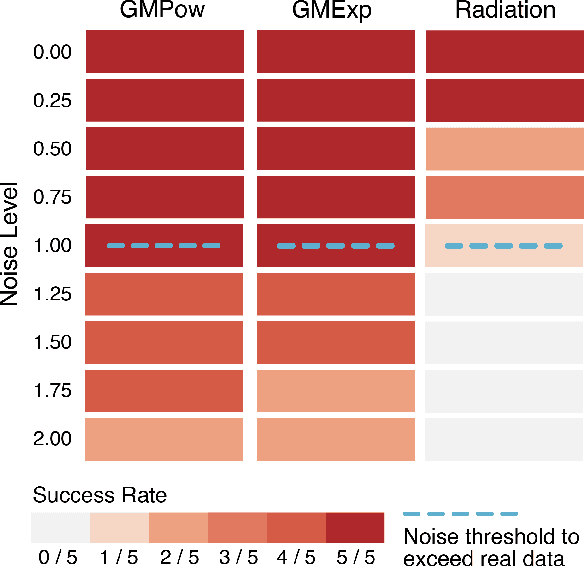
Abstract:Human mobility is a fundamental aspect of social behavior, with broad applications in transportation, urban planning, and epidemic modeling. However, for decades new mathematical formulas to model mobility phenomena have been scarce and usually discovered by analogy to physical processes, such as the gravity model and the radiation model. These sporadic discoveries are often thought to rely on intuition and luck in fitting empirical data. Here, we propose a systematic approach that leverages symbolic regression to automatically discover interpretable models from human mobility data. Our approach finds several well-known formulas, such as the distance decay effect and classical gravity models, as well as previously unknown ones, such as an exponential-power-law decay that can be explained by the maximum entropy principle. By relaxing the constraints on the complexity of model expressions, we further show how key variables of human mobility are progressively incorporated into the model, making this framework a powerful tool for revealing the underlying mathematical structures of complex social phenomena directly from observational data.
Superimposed Pilot-based Channel Estimation for RIS-Assisted IoT Systems Using Lightweight Networks
Dec 07, 2022Abstract:Conventional channel estimation (CE) for Internet of Things (IoT) systems encounters challenges such as low spectral efficiency, high energy consumption, and blocked propagation paths. Although superimposed pilot-based CE schemes and the reconfigurable intelligent surface (RIS) could partially tackle these challenges, limited researches have been done for a systematic solution. In this paper, a superimposed pilot-based CE with the reconfigurable intelligent surface (RIS)-assisted mode is proposed and further enhanced the performance by networks. Specifically, at the user equipment (UE), the pilot for CE is superimposed on the uplink user data to improve the spectral efficiency and energy consumption for IoT systems, and two lightweight networks at the base station (BS) alleviate the computational complexity and processing delay for the CE and symbol detection (SD). These dedicated networks are developed in a cooperation manner. That is, the conventional methods are employed to perform initial feature extraction, and the developed neural networks (NNs) are oriented to learn along with the extracted features. With the assistance of the extracted initial feature, the number of training data for network training is reduced. Simulation results show that, the computational complexity and processing delay are decreased without sacrificing the accuracy of CE and SD, and the normalized mean square error (NMSE) and bit error rate (BER) performance at the BS are improved against the parameter variance.
Transfer Learning-based Channel Estimation in Orthogonal Frequency Division Multiplexing Systems Using Data-nulling Superimposed Pilots
May 28, 2022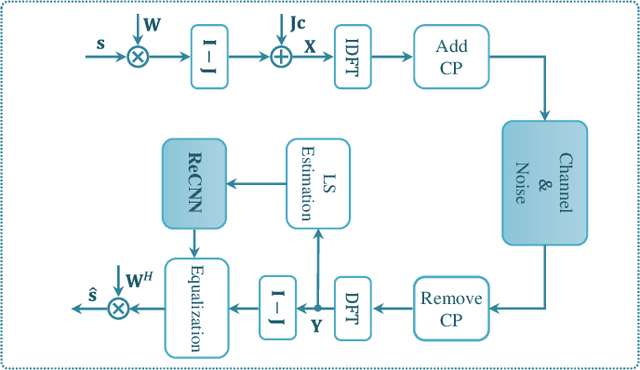
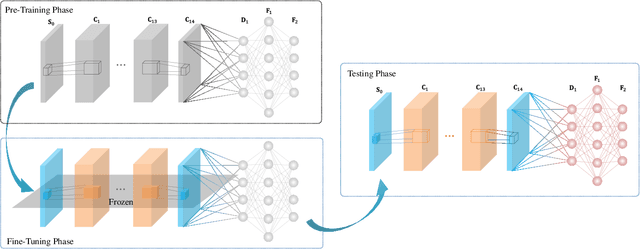

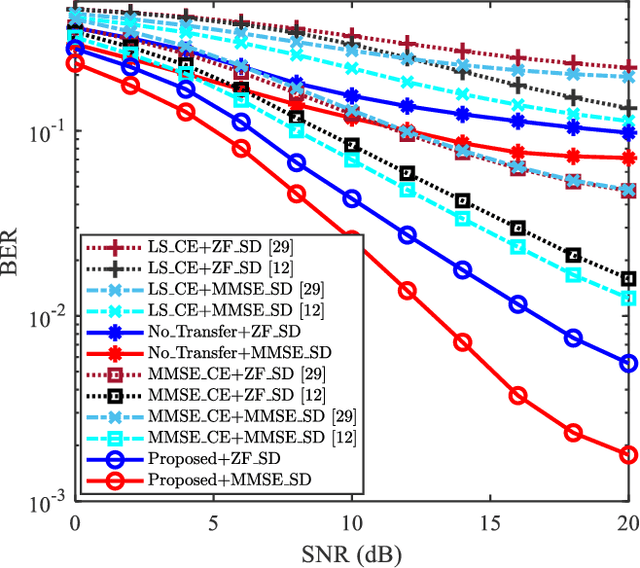
Abstract:Data-nulling superimposed pilot (DNSP) effectively alleviates the superimposed interference of superimposed training (ST)-based channel estimation (CE) in orthogonal frequency division multiplexing (OFDM) systems, while facing the challenges of the estimation accuracy and computational complexity. By developing the promising solutions of deep learning (DL) in the physical layer of wireless communication, we fuse the DNSP and DL to tackle these challenges in this paper. Nevertheless, due to the changes of wireless scenarios, the model mismatch of DL leads to the performance degradation of CE, and thus faces the issue of network retraining. To address this issue, a lightweight transfer learning (TL) network is further proposed for the DL-based DNSP scheme, and thus structures a TL-based CE in OFDM systems. Specifically, based on the linear receiver, the least squares estimation is first employed to extract the initial features of CE. With the extracted features, we develop a convolutional neural network (CNN) to fuse the solutions of DLbased CE and the CE of DNSP. Finally, a lightweight TL network is constructed to address the model mismatch. To this end, a novel CE network for the DNSP scheme in OFDM systems is structured, which improves its estimation accuracy and alleviates the model mismatch. The experimental results show that in all signal-to-noise-ratio (SNR) regions, the proposed method achieves lower normalized mean squared error (NMSE) than the existing DNSP schemes with minimum mean square error (MMSE)-based CE. For example, when the SNR is 0 decibel (dB), the proposed scheme achieves similar NMSE as that of the MMSE-based CE scheme at 20 dB, thereby significantly improving the estimation accuracy of CE. In addition, relative to the existing schemes, the improvement of the proposed scheme presents its robustness against the impacts of parameter variations.
Joint Model and Data Driven Receiver Design for Data-Dependent Superimposed Training Scheme with Imperfect Hardware
Oct 26, 2021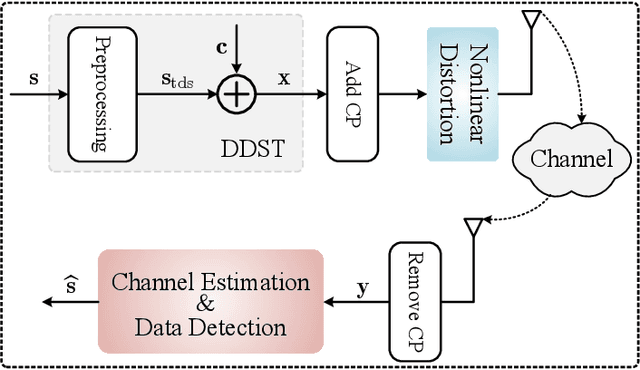
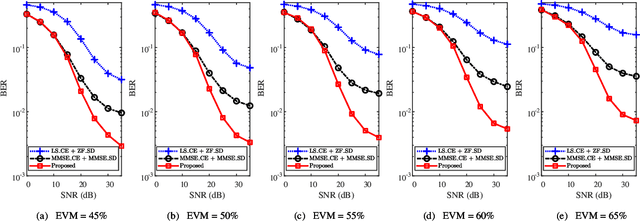

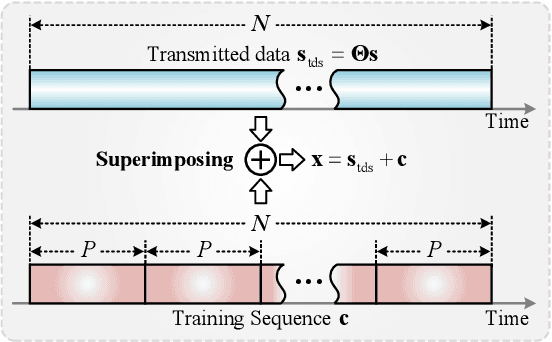
Abstract:Data-dependent superimposed training (DDST) scheme has shown the potential to achieve high bandwidth efficiency, while encounters symbol misidentification caused by hardware imperfection. To tackle these challenges, a joint model and data driven receiver scheme is proposed in this paper. Specifically, based on the conventional linear receiver model, the least squares (LS) estimation and zero forcing (ZF) equalization are first employed to extract the initial features for channel estimation and data detection. Then, shallow neural networks, named CE-Net and SD-Net, are developed to refine the channel estimation and data detection, where the imperfect hardware is modeled as a nonlinear function and data is utilized to train these neural networks to approximate it. Simulation results show that compared with the conventional minimum mean square error (MMSE) equalization scheme, the proposed one effectively suppresses the symbol misidentification and achieves similar or better bit error rate (BER) performance without the second-order statistics about the channel and noise.
Enhanced ELM Based Channel Estimation for RIS-Assisted OFDM systems with Insufficient CP and Imperfect Hardware
Oct 26, 2021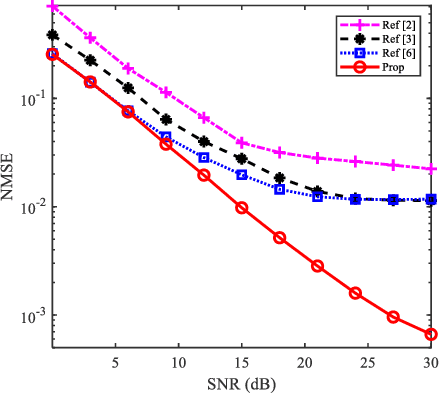
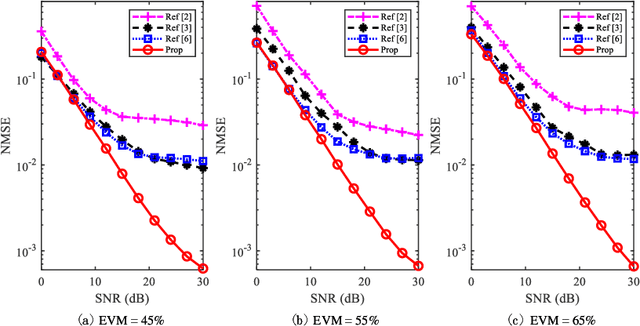
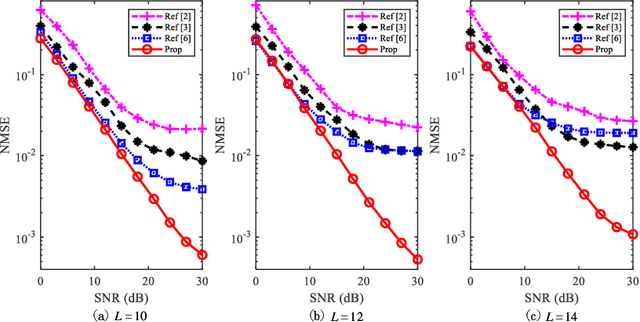
Abstract:Reconfigurable intelligent surface (RIS)-assisted orthogonal frequency division multiplexing (OFDM) systems have aroused extensive research interests due to the controllable communication environment and the performance of combating multi-path interference. However, as the premise of RIS-assisted OFDM systems, the accuracy of channel estimation is severely degraded by the increased possibility of insufficient cyclic prefix (CP) produced by extra cascaded channels of RIS and the nonlinear distortion lead by imperfect hardware. To address these issues, an enhanced extreme learning machine (ELM)- based channel estimation (eELM-CE) is proposed in this letter to facilitate accurate channel estimation. Based on the model-driven mode, least square (LS) estimation is employed to highlight the initial linear features for channel estimation. Then, according to the obtained initial features, an enhanced ELM network is constructed to refine the channel estimation. In particular, we start from the perspective of guiding it to recognize the feature, and normalize the data after the network activation function to enhance the ability of identifying non-linear factors. Experiment results show that, compared with existing methods, the proposed method achieves a much lower normalized mean square error (NMSE) given insufficient CP and imperfect hardware. In addition, the simulation results indicate that the proposed method possesses robustness against the parameter variations.
Group Sparse Bayesian Learning for Active Surveillance on Epidemic Dynamics
Nov 21, 2017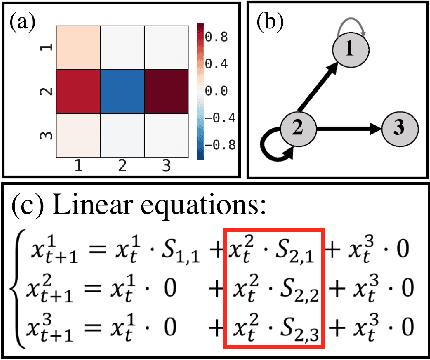
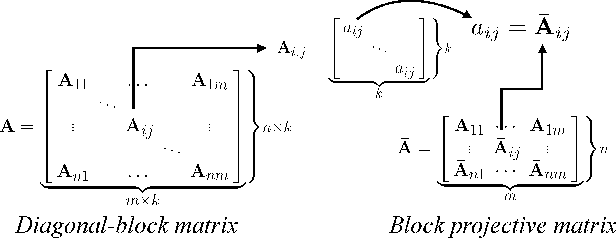

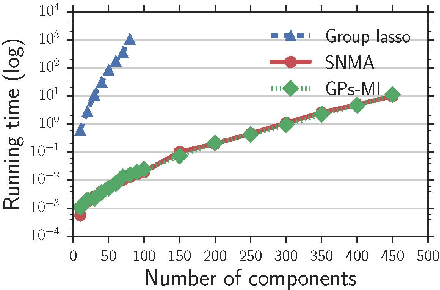
Abstract:Predicting epidemic dynamics is of great value in understanding and controlling diffusion processes, such as infectious disease spread and information propagation. This task is intractable, especially when surveillance resources are very limited. To address the challenge, we study the problem of active surveillance, i.e., how to identify a small portion of system components as sentinels to effect monitoring, such that the epidemic dynamics of an entire system can be readily predicted from the partial data collected by such sentinels. We propose a novel measure, the gamma value, to identify the sentinels by modeling a sentinel network with row sparsity structure. We design a flexible group sparse Bayesian learning algorithm to mine the sentinel network suitable for handling both linear and non-linear dynamical systems by using the expectation maximization method and variational approximation. The efficacy of the proposed algorithm is theoretically analyzed and empirically validated using both synthetic and real-world data.
 Add to Chrome
Add to Chrome Add to Firefox
Add to Firefox Add to Edge
Add to Edge